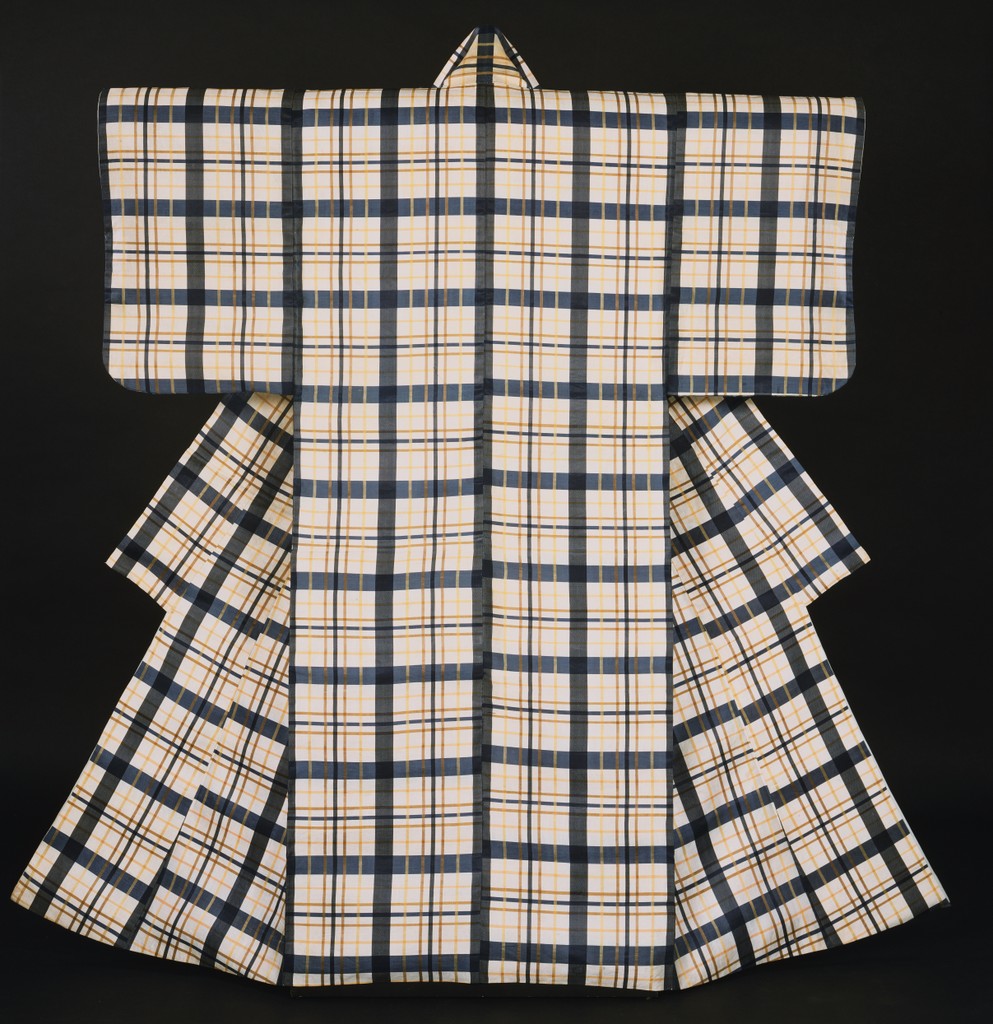Noh Robe (Kitsuke)

Full description
This garment is a Noh robe, typically worn by Noh actors. Noh costumes were also exempt from sumptuary laws, making the costumes more often composed of silk cloth, with woven or embroidered patterns. Atsuita referred originally to a weaving technique that created a raised pattern but was also applicable to a woven inner garment that would be worn for male roles in Noh dramas (Philidelphia Museum of Art). In contrast to this is the surihaku, the inner robe worn for female roles, which featured metallic leaf designs (Denney 118). This example is a kosode, a small-sleeved garment where the wrist openings of the sleeves are small and meant for a male role. The garment has a simple grid-like geometric pattern that is colored blue and yellow. This would usually be worn under an ōsode robe, which was an outer garment that had large sleeves (Denney 119). The outer garment would feature dynamic colors and patterns, while the inner garments would feature simpler patterns and designs.
Comments
to view and add comments.
Annotations
No one has annotated a text with this resource yet.
- typeImage
- created on
- file formatjpg
- file size290 kB
- creatorUnknown
- rightsThis image was provided by Philadelphia Museum of Art. Contact information: Ms. Conna Clark, Manager, Rights & Reproductions, Philadelphia Museum of Art, P.O. Box 7646, Philadelphia, PA 19101, (215) 684-7901 (ph), (215) 235-0034 (fax), cclark@philamuseum.org.
- rights holderPhilidelphia Museum of Art


